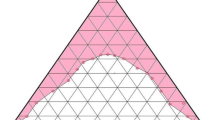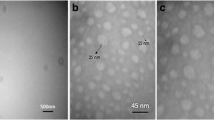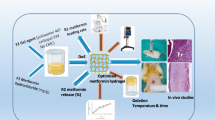Abstract
The purpose of this study was to develop pirfenidone (PF) ointment formulations for a dose finding study in the prophylactic treatment of deep partial-thickness burns in a mouse model. A preformulation study was performed to evaluate the solubility of PF in buffers and different solvents and its stability. Three different formulations containing 1, 3.5, and 6.5% w/w PF were prepared and optimized for their composition for testing in mice. Optimized formulations showed promising in vitro release profiles, in which 20–45% of PF was released in the first 7 h and 70–90% released within 48 h. The rheological properties of the ointment remained stable throughout storage at 25 ± 2°C/60% RH. Animal studies showed treatments of burn wounds during the inflammatory stage of wound healing with PF ointments at different drug concentrations had no adverse effects on reepithelization. Moreover, 6.5% PF ointment (F3) reduced the expression of pro-inflammatory cytokines IL-12p70 and TNFα. This study suggests that hydrocarbon base ointment could be a promising dosage form for topical delivery of PF in treatment of deep partial-thickness burns.











Similar content being viewed by others
References
Tredget EE, Levi B, Donelan MB. Biology and principles of scar management and burn reconstruction. Surg Clin North Am. 2014;94(4):793–815.
Qian L-W, Fourcaudot AB, Yamane K, You T, Chan RK, Leung KP. Exacerbated and prolonged inflammation impairs wound healing and increases scarring. Wound Repair Regen. 2016;24(1):26–34.
Penn JW, Grobbelaar AO, Rolfe KJ. The role of the TGF-β family in wound healing, burns and scarring: a review. Int J Burns Trauma. 2012;2(1):18–28.
Karagoz H, Sever C, Bayram Y, Sahin C, Kulahci Y, Ulkur E. A review of the prevention and treatment of hypertrophic scars: part I clinical aspects. Arch Clin Exp Surg (ACES). 2012;1(4):237–48.
Aarabi S, Longaker MT, Gurtner GC. Hypertrophic scar formation following burns and trauma: new approaches to treatment. PLoS Med. 2007;4(9):1464–70.
Wasiak J, Cleland H, Campbell F, Spinks A. Dressings for superficial and partial thickness burns. Cochrane Database Syst Rev. 2013;3:1–85.
J Schaefer C, W Ruhrmund D, Pan L, Seiwert S, Kossen K. Antifibrotic activities of pirfenidone in animal models. Eur Respir Rev. 2011;20(120):85–97.
Veras-Castillo ER, Cardenas-Camarena L, Lyra-Gonzalez I, Munoz-Valle JF, Lucano-Landeros S, Guerrerosantos J, et al. Controlled clinical trial with pirfenidone in the treatment of breast capsular contracture: association of TGF-beta polymorphisms. Ann Plast Surg. 2013;70(1):16–22.
Armendariz-Borunda J, Lyra-Gonzalez I, Medina-Preciado D, Gonzalez-Garcia I, Martinez-Fong D, Miranda RA, et al. A controlled clinical trial with pirfenidone in the treatment of pathological skin scarring caused by burns in pediatric patients. Ann Plast Surg. 2012;68(1):22–8.
NIH U.S. National Library of Medicine - ClinicalTrials.gov [cited 12.14.2017]. Available from: https://clinicaltrials.gov/ct2/results?term=pirfenidone+AND+fibrosis&Search=Search.
Rowan MP, Cancio LC, Elster EA, Burmeister DM, Rose LF, Natesan S, et al. Burn wound healing and treatment: review and advancements. Crit Care. 2015;19:1–12.
Hall CL, Wells AR, Leung KP. Pirfenidone reduces profibrotic responses in human dermal myofibroblasts, in vitro. Lab Investig. 2018. https://doi.org/10.1038/s41374-017-0014-3
Moran N. p38 kinase inhibitor approved for idiopathic pulmonary fibrosis. Nat Biotech. 2011;29(4):301.
Furukawa F, Matsuzaki K, Mori S, Tahashi Y, Yoshida K, Sugano Y, et al. p38 MAPK mediates fibrogenic signal through smad3 phosphorylation in rat myofibroblasts. Hepatology. 2003;38(4):879–89.
Rodríguez-Castellanos M, Tlacuilo-Parra A, Sánchez-Enríquez S, Vélez-Gómez E, Guevara-Gutiérrez E. Pirfenidone gel in patients with localized scleroderma: a phase II study. Arthritis Res Ther. 2014;16(510):1–8.
Giri SN, Margolin SB. Effects of topical application of pirfenidone ointment on thermoplasty-induced acute lameness in a double-blind and acute and chronic lameness of musculoskeletal origin in an open multi-centered field trial in horses. Res Commun Mol Pathol Pharmacol. 2005;117-118:47–63.
Parmar V, Desai SB, Vaja T. RP-HPLC and UV spectrophotometric methods for estimation of pirfenidone in pharmaceutical formulations. Indian J Pharm Sci. 2014;76:225–30.
Thorat S, P Padmane S, R Tajne M, M Ittadwar A. Development and validation of simple, rapid and sensitive UV, HPLC and HPTLC methods for the estimation of pirfenidone in tablet dosage form. J Chil Chem Soc. 2016;61(2):2978–81.
Babu Bodempudi S, Babur R, Srinivasa Reddy K. Development and substantiation of a RP-HPLC method for monitoring of impurities in pirfenidone drug substance. Am J Anal Chem. 2015;06:1019–29.
Salerno C, Carlucci AM, Bregni C. Study of in vitro drug release and percutaneous absorption of fluconazole from topical dosage forms. AAPS PharmSciTech. 2010;11(2):986–92.
Lokhandwala H, Deshpande A, Deshpande S. Kinetic modeling and dissolution profiles comparison: an overview. Int J Pharm. 2013;4(1):728–38.
Rajesh Asija SP, Sangeeta Asija, Sandeep Kataria Formulation and evaluation of herbal ointment of Murraya koenigii. Int J Pharm Res Bio-Sci 2015;4(3):433–443.
Said J, Dodoo CC, Walker M, Parsons D, Stapleton P, Beezer AE, et al. An in vitro test of the efficacy of silver-containing wound dressings against Staphylococcus aureus and Pseudomonas aeruginosa in simulated wound fluid. Int J Pharm. 2014;462(1):123–8.
ICH Topic Q 1 A (R2) Stability testing of new drug substances and products. Note for guidance on stability testing: stability testing of new drug substances and products (CPMP/ICH/2736/99) [Internet]. [cited 12.14.2017]. Available from: http://www.ich.org/products/guidelines/quality/quality-single/article/stability-testing-of-new-drug-substances-and-products.html.
Medina JL, FFA, Sebastian EA, Shankar R., Brown AW and, KP L Standardization of deep partial-thickness scald burns in C57BL/6 mice. Int J Burn Trauma. 2018;(8)2
Zheng X-F, Hong Y-X, Feng G-J, Zhang G-F, Rogers H, Lewis MAO, et al. Lipopolysaccharide-induced M2 to M1 macrophage transformation for IL-12p70 production is blocked by Candida albicans mediated up-regulation of EBI3 expression. PLoS One. 2013;8(5):1–10.
Ashcroft GS, Jeong M-J, Ashworth JJ, Hardman M, Jin W, Moutsopoulos N, et al. Tumor necrosis factor-alpha (TNF-α) is a therapeutic target for impaired cutaneous wound healing. Wound Repair Regen. 2012;20(1):38–49.
Funding
RD performed this study at the US Army Institute of Surgical Research during her sabbatical leave from the University of Pavia, Italy. Her stipend was supported by an appointment to the Postgraduate Research Participation Program at the US Army Institute of Surgical Research administered by the Oak Ridge Institute for Science and Education through an interagency agreement between the US Department of Energy and US Army Medical Research and Materiel Command (USAMRMC). This work was supported in part through the Congressionally Directed Medical Research Programs, USAMRMC W81XWH-15-2-0083, and the Naval Medical Research Center’s Advanced Medical Development program (MIPR N3239815MHX040).
Author information
Authors and Affiliations
Corresponding author
Ethics declarations
This study has been conducted in compliance with the Animal Welfare Act, the implementing Animal Welfare Regulations, and the principles of the Guide for the Care and Use of Laboratory Animals.
Conflict of Interest
The authors declare that they have no conflict of interest.
Disclosure
The opinions or assertions contained herein are the private views of the authors and are not to be construed as official or as reflecting the views of the Department of the Army or the Department of Defense.
Electronic supplementary material
Supplemental Figure 1
Histological mouse skin sections 3 days after a deep partial-thickness burn treated with pirfenidone ointment. Images depict H&E stained sections from burn wounds 3 days after thermal injury and treated with A) placebo, B) 1%, C) 3.5%, and D) 6.5% pirfenidone ointment. Black arrow heads point to the burn wound edges showing a loss of the epidermis between. Insets are from the areas marked by the lines indicating the left burn wound edge. Left of the black arrows in the insets point at the leading edge of the intact epidermis. (GIF 291 kb)
Supplemental Figure 2
Histological mouse skin sections 12 days after a deep partial-thickness burn treated with pirfenidone ointment. Images depict H&E stained sections from burn wounds 12 days after thermal injury and treated with A) placebo, B) 1%, C) 3.5%, and D) 6.5%pirfenidone ointment. Many of the wounds completely reepithelialized 12 days after the burn and most were close to full reepithelialization. Black arrow heads point at the left wound edges or wound centers. Insets are from the areas marked by the brackets. Left of the black arrows if present in the insets point at the leading edge of the intact epidermal layer. (GIF 375 kb)
Supplemental Figure 3
Histological mouse skin sections 22 days after a deep partial-thickness burn treated with pirfenidone ointment. Images depict H&E stained sections from burn wounds 22 days after thermal injury and treated with A) placebo, B) 1%, C) 3.5%, and D) 6.5% pirfenidone ointment. Most burn wounds completely reepithelialized 22 days after the burn injury. (GIF 477 kb)
Rights and permissions
About this article
Cite this article
Dorati, R., Medina, J.L., DeLuca, P.P. et al. Development of a Topical 48-H Release Formulation as an Anti-scarring Treatment for Deep Partial-Thickness Burns. AAPS PharmSciTech 19, 2264–2275 (2018). https://doi.org/10.1208/s12249-018-1030-3
Received:
Accepted:
Published:
Issue Date:
DOI: https://doi.org/10.1208/s12249-018-1030-3




